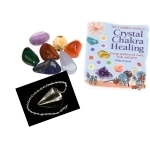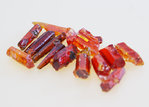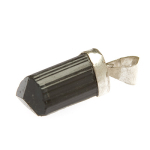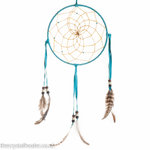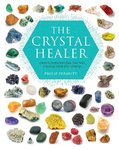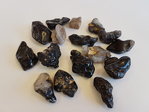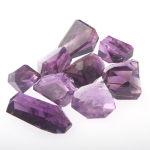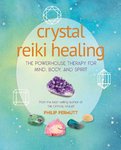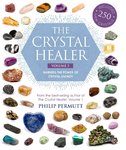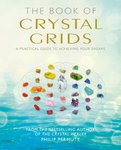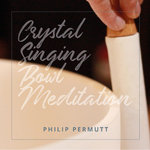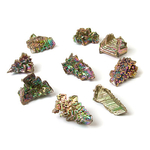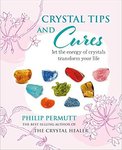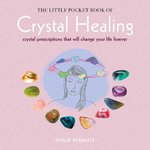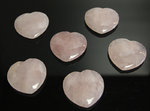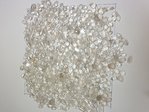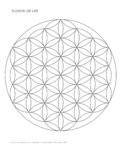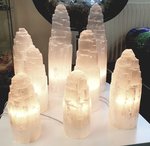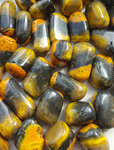Shop Categories Philip's Crystal Blog Posts on topic: calcite
Philip's Crystal Blog
Philip Permutt's musings on crystals, crystal healing, life, the universe and everything all contained in one simple blog. Although Philip writes extensively in his books on crystal healing, his Take a Break's Fate & Fortune Crystal Clinic with Philip Permutt monthly column and other magazine articles he still occasionally finds time to write things here!
Iceland Spar: The Rock That Discovered Optics
Iceland Spar: The Rock That Discovered Optics
A Guest Blog Post by Roger Cicala
Every year, I can’t think of anything I want for Christmas. So this year, I was pretty excited to come home and tell my wife, “I know exactly what I want for Christmas. A nice big piece of Iceland spar.” I even sent her a link to make it easy. (It’s certainly a comment on our times that I sent a text link across the room to my wife.)
-

- It’s not motion blur, it’s Iceland spar!
“Really? You want a $100 rock for Christmas?” she asked. I considered mentioning that the price of the rock I want is a tiny fraction of the price of the rock she wants, but thought better of it because she was giving me that look she gives me sometimes. You know, the look that says she knows that at some time there was some reason she chose me, but at this moment she can’t remember when that time was nor that reason.
Instead, I started to explain how Iceland spar is probably the coolest, most important substance ever. How the Vikings probably used it to find America. How Iceland spar was a key to discovering what light actually was. That every great name in optics from Huygens, to Newton, to Fresnel, and even Edwin Land (of Polaroid fame) used Iceland spar. How a shortage of Iceland spar in the late 1800s was considered an emergency by almost every industrial nation. That Iceland spar helped win World War II and can make things invisible.
Of course, before I could tell her even half of that stuff, she rolled her eyes and wrinkled her nose the way she does when the dogs or I bring something into the house that she feels would best be left outside to further decompose. She did look at the link I sent, though, because she asked, “Why does something called Iceland spar come from Mexico?”
I’m pretty sure she wasn’t particularly interested in the answer, because she immediately started talking to herself. Something about whether there were mature, grown-up males anywhere on the planet. My response, that they raised unicorns near Atlantis, apparently has created enough ‘alone time’ for me to write this post and tell you all the cool stuff I didn’t get to tell her. And to order a piece of Iceland spar, because I’m fairly certain it won’t be under the tree.
So, What is Iceland spar?
Iceland spar is a crystal of calcite (calcium carbonate). Calcite is a fairly common mineral and comes in a spectacular range of colors caused by the impurities it contains.

- http://gwydir.demon.co.uk/jo/minerals/alphabet.htm
Iceland spar is rather unique among the calcites. It contains no impurities, so it’s nearly colorless and transparent to both visible and ultraviolet light. For centuries, the only source of this pure calcite was located near Reydarfjördur fjord in eastern Iceland, hence most of the world called it Iceland spar (spar means a crystal with smooth surfaces). The Icelanders just called it silfurberg, meaning silver rock.
A crystal of Iceland spar has two very interesting properties. First, it is a natural polarizing filter. Second, because of its natural polarization, Iceland spar is birefringent, meaning light rays entering the crystal become polarized, split, and take two paths to exit the crystal – creating a double image of an object seen through the crystal.
There is good evidence that the Vikings used the polarizing effect of Iceland spar to navigate the North Atlantic. The constant fog and mist in the North Atlantic often make navigation by stars or sun impossible. The Vikings called Iceland spar a ‘sunstone’ because the polarizing effect can be used to find the direction of the sun even in dense fog and overcast conditions. It can even find the direction of the sun when the sun is actually below the horizon, as happens when you’re sailing above the Arctic circle.
-

- The polarizing effect of Iceland spar can accurately locate the sun even through heavy clouds or mist. If you’re a Viking. I’ve tried it and had no success at all. Credit: ArniEin, WIkipedia Commons
The second interesting feature of Iceland spar is birefringence, meaning it refracts light into two separate images, is more noticeable. The double image may just seem mildly interesting to you and me. But it turned the scientific world (at least the optical part of it) upside down back in the 1600s.
-

- A piece of Iceland spar on my worktable, doubly refracting the gridlines.
Iceland Spar and the Theories of Light
Rasmus Bartholin of Copenhagen made the first written reports about Icelandic spar in 1669. At the time, Snell’s law of refraction were well known. Snell’s law said a regular crystal would bend light rays a given amount and there was a nice formula to calculate that amount. But Bartholin’s report showed that Iceland spar bent light two different amounts, creating two different images. This seemed to break Snell’s law.
Within a few years, Bartholin’s findings had been discussed throughout Europe and scientists (they would have called themselves natural philosophers back then) were begging for samples of Iceland spar. (They had to beg from people in Denmark, like Bartholin, because Iceland was part of the Danish Kingdom.) Among those begging were Christiaan Huygens and Isaac Newton.
Christiaan Huygens, in addition to originating Troy Polamalu’s hair cut, was an amazingly brilliant and productive man. He discovered the formula for centripetal force, invented the pendulum clock and the pocket watch, and discovered Saturn’s rings and largest moon (Titan) as well as the Orion nebula.
-

- Christiaan Huygens (left) and Troy Polamalu. Coincidence?
Huygens spent over a year experimenting with Iceland spar after Bartholin sent him some samples. He discovered that putting a second piece of Icelandic spar over the first piece didn’t make 4 images out of the two seen through the first piece of spar. In fact, by rotating a second piece over the first, he could make either of the original two images disappear.
The reason, we now know, is that Iceland spar is a natural polarizer. It splits the incoming light into two polarized beams, making two images. By using a second piece of Iceland spar he could block either of the polarized images originating from the first piece. I don’t have a second piece of Iceland spar handy, but I can do the same thing Huygens did by putting a polarizing filter on my lens. Depending upon which way I rotate the polarizer I can eliminate either one of the refracted images.
-

- Image through Iceland spar (top), and then two images taken with polarizing filter.
Huygens decided the two refractions were best explained by considering light a spherical wavefront; that the crystal separated the waves in two slightly different directions because of different velocities of the waves. He developed formulae mathematically describing the geometry of such waves, which originated much of modern geometric optics. Unfortunately, his wave theory of light was not widely accepted at the time, partly because his longitudinal waves did not really explain birefringence very well. His formulae for geometric optics were accepted, though, because they generally worked.
Isaac Newton had already determined that white light is made up of various colors and that the different colors refracted different amounts (what we now think of as chromatic aberration). He had decided that light was not waves, but rather ‘corpuscles’ or particles (which is also correct). He proved that Huygens wave theory could not really explain the double refraction of Icelandic spar. Instead, he claimed, birefringence occurred because light particles had two sides, and the crystal separated those sides. Newton couldn’t prove this, of course, but his reputation being what it was people generally accepted it for the next 100 years or so.
-

- Isaac Newton
Iceland spar, then, contributed to the original development of both the wave and particle theories of light as the great optical scientists of the day tried to explain birefringence. Oddly enough, neither theory explained birefringence very well. At the time, both theories were partially correct and partially incomplete. They would remain that way for over a century until Thomas Young came along.
Young definitely proved the wavelike nature of light in 1801 in a series of experiments that (unfortunately) had nothing to do with Iceland spar. Soon after that, though, a French scientist, Etienne Louis Malus, noticed the polarizing effects of Iceland spar when he rotated it and looked at sunlight from various angles. He experimented with it and eventually developed Malus’ Law, which predicts the strength of a beam of polarized light when passing through another polarizer.
A decade later, both Young and Augustin-Jean Fresnel (of Fresnel lens fame) finally explained the polarization of Icelandic spar. When they thought of light waves as transverse (like ripples in a pond) not longitudinal (like a slinky), then polarization of the waves was possible, explaining the birefringence of Iceland spar. It was nearly 150 years after Huygens that Young and Fresnel finally developed a wave theory of light that explained polarization and birefringence.
Using Polarized Light
Once there was a good understanding of how Iceland spar polarized light, it wasn’t long before people put this new knowledge to practical use. With simple pieces of Iceland spar, scientists of the day discovered that the atmosphere polarized sunlight, that light from a comet’s tail was polarized, moonlight was partially polarized, and certain chemicals in solution were also polarized.
The Nicol prism was invented in 1828 by, not surprisingly, William Nicol. It consisted of two wedges of Icelandic spar joined together with a layer of Canadian balsam. When light is shined in one end the spar split the beams. Because of the two angles of refraction, one beam exits the end of the prism as polarized light. The other was refracted outside the prism and absorbed.
-
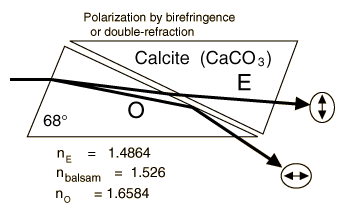
- Nicol prism: http://hyperphysics.phy-astr.gsu.edu/
The Wollaston prism was aligned somewhat differently and emitted two beams of polarized light. Dozens of other types of polarizing prisms were developed over the next few years.
-

- Wollason prism. Fgalore, courtesy Wikipedia commons.
Scientists now had a source of polarized light to play with, and play with it they did. Photometers and spectrophotometers (instruments that measured light intensity and character) were developed. They were used both in pure scientific research and in the chemical industry. Polarimeters (instruments that measures the change of polarized light passing through solutions) detected the presence of, and measured the concentrations of, specific chemicals in solutions.
Chemical synthesis, extractions, and purity analysis exploded in the mid-1800s, largely because of these instruments. The sugar industry was rife with fraud before the development of polarimeters, but once they became available accurate measurements of sugar concentration could be made. Chemists could accurately assay concentrations for the first time, allowing them to purify numerous substances. Medicines changed from ground herbs of unknown concentration to purified preparations with known potency.

Late 1800s Polarimeter. http://antiquesci.com/
Polarized microscopes were used in biology and medicine, but also in geology to assess the authenticity of gems and crystals. For photographers and astronomers, crossed polarizers were used to assess optical glass and lenses. Flaws and defects in the glass which were invisible to visual inspection showed very clearly when examined by polarizers.
There were even early attempts to use Iceland spar to create 3-D imaging. In 1894, a British physicist named John Anderton patented a system that would project paired images through magic lanterns each equipped with Nicol prism polarizers in different orientations. A viewer with opposite oriented prisms would reproduce a 3-dimensional image. While the system would work in theory, it was probably too bulky and expensive to ever gain widespread use. (Edwin Land created a similar system in the 1930s with his polarized film.)
Every one of these scientific instruments used prisms made of Iceland spar to create polarized light. Iceland spar was no longer a scientific curiosity; it was a major industrial component used in thousands of measuring devices. With only one source of the crystals, it wasn’t surprising that significant shortages of Iceland spar occurred. The situation became so severe that European instrument makers got the governments of Germany and France to request increased mining in Iceland, but the mine there was nearly exhausted.
New sources were found first in South Africa and later in Mexico, the U. S., and South America. Even with these new sources, the supply was always limited. Worldwide mining produced a few tons of optical grade Iceland spar, at most, each year. For example, the mine at Taos County, New Mexico produced 850 pounds (not tons, pounds) of Iceland spar in 1939.
Iceland spar Goes Modern
Edwin Land’s invention of polarizing sheets and films in 1928 helped alleviate the Iceland spar shortage, although polarizing film was only useful in certain applications. Some other polarizing crystals, both natural and artificial, were also developed. But Iceland spar continued to be used in a variety of optical instruments and remained in great demand throughout the 20th century.
By an interesting coincidence, Edwin Land created some of this demand. When the United States entered World War II, one of its first needs was a small, accurate gun sight for its warplanes and anti-aircraft guns. Aerial gun sights at the time were large bulky affairs with prisms and lenses. Land invented the optical ring sight, which consisted of two sheets of polarizing film and two optical wave plates sandwiching a crystal of Iceland spar. Iceland spar was considered a strategic resource by the U. S. government, which had classified studies done assessing the Iceland spar mines of South and Central American nations.

Drawings from US patent 2420252-0 for a polarized 'ring sight'. When the target is in position the polarization shows active crosshairs.
Optical calcite polarizers are used today as polarizers and beam-splitters in the the laser and fiberoptics industries. You can still find devices that contain Nicol and Wollaston prisms today, but the most common current use of calcite crystals is in Glan-type prisms. These can withstand very high luminance and are used to polarize laser light. Quartz and synthetic materials can be used in many, but not all of these applications, and synthetic calcite remains expensive and difficult to produce. Most of the optical calcite crystals used today are mined just like they were in the old days, which is why Iceland spar crystals remain rather pricey.
Perhaps the most interesting modern research using optical calcite is to actually make things invisible. Researchers have found that using a pair of shaped calcite crystals in certain media, they can effectively make small objects disappear in visible light. Light from behind the object bends right around it while passing through the two crystals. Viewed from the front it’s as if the object isn’t there. If you haven’t seen it, there’s a video of it as demonstrated at the 2013 Technology, Education and Design Conference HERE. It’s pretty amazing.
-

- Using two calcite crystals in certain media makes the object between them (a rolled up pink post-it note in this case) disappear. Credit Baile Zhang, Nanyang Technological University
So There You Have It
Obviously I’ve managed to get one piece of Iceland spar. But I wouldn’t mind a second, so it’s still on my Christmas list. Maybe I could do some fun tricks with disappearing lines and such. Until then we’ve already put the original piece to good use topping the Lensrental’s Tech Room Christmas Tree.

And if there’s an optical geek on your Christmas list – well, now you’ve got a great idea for an original gift. You can get them a nice piece of Iceland spar. And just think how much fun it will be when they ask what it is and, armed with this post, you can smugly tell them geeky stuff they didn’t know.
Roger Cicala
Lensrentals.com
December, 2013
Author’s Note: A few weeks ago someone said to me, “Why don’t you go write an interesting blog post about a rock, or something.” Challenge accepted.
References:
Abrahams, Peter: The Testing of Telescope Optics in Historic Times. Presented to the 1994 Convention of the Antique Telescope Society.
Eric Greene: Iceland spar.
Fries, Carl: Optical Calcite Deposits of the Republic of Mexico. United States Department of the Interior. Bulletin 954-D
Leó Kristjánsson: Iceland spar and it’s influence on the development of science and technology in the period 1780-1930. 3rd Edition. University of Iceland. 2010.
Leó Kristjánsson:Iceland spar and its Legacy in Science. Hist. Geo Space Sci., 3, 117–126, 2012
Ropars, G, et al.: A depolarizer as a possible precise sunstone for Viking navigation by polarized skylight. Proceedings of the Royal Society, Nov. 2011.
Vanderwerf, Dennis: Applied Prismatic and Reflective Optics. Chapter 3: Polarization Properties of Prisms and Reflectors. SPIE, 2010.
Xianzhong Chen, et al: Macroscopic Invisibility Cloaking of Visible Light. Nat Commun. 2011 2: 176.
The great British Post Office!
This is simply MAD! As many of you will know, and if our colonial friends weren't aware you are now, that postal prices in the UK are on the rise. That's OK, these things happen and we were informed that the costs would be increasing about 2 months ago. The only problem with this is that no one will tell me what the new rates are. The headline prices have been announced but not the detail. So we know it will cost over 10 shillings to send a second class letter. Lord knows how much a first class one will be! Ten bob to send a letter. I still clearly remember my first ten shilling note. An Uncle gave it to me for my seventh birthday and I was amazed at how much money this was. I could buy over 100 bars of chocolate or 60 bags of chips! In seven days’ time I won't be able to buy a stamp.
And the crazy thing is that despite taking all this extra money that they’ll be charging me they can't even be bothered to explain the new price structure. It's not on their website. It's not in their glossy leaflets they send to all their business customers. The kind man behind the counter in our local post office doesn't even know, he hasn’t been told... he doesn't even know who he should ask! Then I thought, I know, the company who supply our franking machine must know because they'll be updating the software. So I called them... they don't know.
Alright, so all I have to do is change the prices for the five types of delivery we offer to four world regions. Except now there are no longer 4 world regions but five. The Royal Mail has obviously increased the size of the planet so they can cope with all the paperwork from their complaints department. Once I discover the new world - that's the Royal Mail's and not the Colonies... Berkeley in the 70's was quite a discovery!! Anyway once I've worked out which bits of the world have moved… and where they’ve moved to… and how much more than ten shillings it will cost to send you a crystal or book or CD or even a packet of incense, I will let you all know.
In the meantime here’s some crystal advice…
Dim the lights, sit comfortably, play some relaxing music such as the new Angelic Reiki album and light some incense from the Nitiraj Gold Select range and a candle if you like. Hold a calcite crystal to calm down and gently allow any thoughts of the Post Office to disappear into the ether… Gently breathe and imagine your local Royal Mail sorting office surrounded by tourmaline, it’s a wonderful crystal that will both protect you from their insanity and help their own mental health and promote healing. Then make a crystal grid with 4 quartz crystals in the shape of a star and add a black crystal in the middle, obsidian is perfect for this. Ask your guides to help, and wish for whatever you would like. As your guides will have to work overtime to help anything you order arrive through the post I’d suggest that you add something energetic such as carnelian or garnet to your new crystal grid... Allow yourself to breathe again and when you feel ready run a hot bath, add rose quartz crystals or tumble polished stones to the water and your favourite bubble bath mixture too. Get in and soak up the relaxing and revitalising rose quartz crystal energy. Affirm to yourself that you will never, ever again phone the Post Office Customer Services.
Five things to do with red calcite
Red calcite
Removing fear and bringing calmness
Birthstone Cancer
Planet Moon
Element water
Chakra base
When you are running around trying to do too much, having to be in too many places at the same time holding red calcite will help you relax
Let active children play with red calcite to calm them
Place red calcite next to your bed to help you change repeated patterns
Carry red calcite with you and hold it when you feel panicky
Use the energy of red calcite to boost your emotional energy
from The Little Book of Crystal Tips & Cures
Christmas Crystals
Christmas Crystals All sorts of things happen when the festive season starts. Some wonderful, some interesting and some of them can appear absolutely disastrous!
So what is it that causes half the planet to go into a tiz? How is it that even those who plan their festivities months in advance, you know the really organised people of the world, still have a mad rush because Aunt Edith has decided to come for lunch? Why has Dear Aunt Edith chosen today to come for lunch? She hasn’t been to us for two years and she expects lunch… She’ll expect a glass of sherry too... And what about a present? And do the kids have to give her presents too? Oh I forgot to tell you, its quarter to three in the afternoon and the date is 24th December!
First thing is to calm down. In fact don’t wait till Christmas Eve, calm down now. Relax, chill, and meditate. Try a little meditation because just ten minutes a day for a couple of weeks before Christmas will help you relax, change how you feel and make it easier for you to cope with the festivities.
I was thinking… what else happens and how can crystals help to make your life better?
Well, amethyst clears the air. An Amethyst geode (also known as a cathedral or cave) placed in a living room or dining room will help to clear and energise the air. It will make your whole home feel fresher, calmer and more welcoming.
Calcite is also very calming. Red and honey calcite are good for physical relaxation. Blue calcite works on the mind to ease any worries, whilst the green variety of calcite will help soothe your emotions and feelings. For spiritual tranquillity surround yourself with golden calcite that brings a blissful feeling to both you and those around you.
Rose quartz is the stone of love, peace and goodwill. Like a bubble bath for your emotions, its energy washes over you and gently bathes your heart in gentle pink crystal light washing away the hassles and stresses of the day. It’s a wonderful feeling on dark winter nights (or any time for that matter). Try putting some rose quartz in your bath to refresh your skin and soak any aches away and help you feel younger.
If you feel you need an energy boost, hold a garnet crystal for half an hour or carry it with you all day. It’s great for a detox and cleanses the blood so it will help rid you of all those festive toxins too!
Brightening up both your home and your energy is easy with quartz crystals. Put a cluster in any room to add sparkle, hang crystals from your tree or windows (faceted hanging crystals will generate rainbows of light when the sun hits them) and carry a small crystal with you.
Take care if you’re travelling to family or friends over the festive season. This time of year people always seem to be in a hurry or distracted by thoughts of what they’re going to buy or cook and for whom; so even if you are the most careful driver on the road others may not be as focused as they should be. Whether it’s a walk to the local corner shop or flying to see relations in Australia, carry turquoise to protect you whilst travelling and keep you safe from misfortune.
Of course not everyone enjoys the festivities and some people find this time of year emotionally difficult. Apache tears help to release deep seated emotions. If you feel uncomfortable approaching this season keep an Apache tear with you. It will help you to gently let go of the past and slowly feel better about the festive season.
Aqua aura balances your energy field and protects you too. It adds colour, lifts you up and lets you down slowly. It gives you extra strength when you need it. And if you want to get away from it all it titanium quartz is great too as it aids astral travel and access to other dimensions. Angel aura quartz helps you connect to your angels guides and relatives who have passed over.
Now if your neighbours keep having noisy parties and don't invite you try putting a piece of pyrite on each window ledge. It’s magical and in no time at all you won’t even notice them.
And after it’s all over malachite will help you have a peaceful nights sleep.
Whatever you choose to celebrate I wish you a happy and peaceful festive season.
Merry Christmas
Philip
Rainy day meditation, crystals for a rainy day
Rain patters down on the windows, thoughts come and go floating through my mind. Meditation brings peace and allows healing energy to flow. I notice the citrine crystal in my pocket. Citrine brings light, energy, laughter and joy to any rainy day. And of course this sets my brain in motion.
So here are some crystals to pick you up on any day you feel a bit down,
"crystals for a rainy day.."
Firstly jasper helps lift your mood whist amazonite and calcite ease your fears and worries making you feel better. Quartz crystal brings light and sparkle into your life and carnelian energy. Copper, lepidolite and peridot are all "feel better" stones doing what it says on the tin! Chrysocolla can help any hormonal imbalance bringing you down and chrysoprase helps you see through any confusion in your mind.
And the thought of med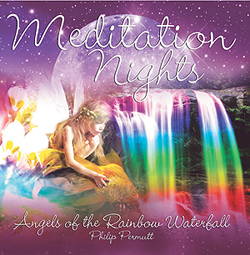 itation reminds me to mention my new CD (not that I really needed reminding!). Meditation Nights - Angels of the Rainbow Waterfall. It takes you on a magical journey into a safe space in your own home, where you can relax and refresh your soul. Perfect for a rainy day meditation.
itation reminds me to mention my new CD (not that I really needed reminding!). Meditation Nights - Angels of the Rainbow Waterfall. It takes you on a magical journey into a safe space in your own home, where you can relax and refresh your soul. Perfect for a rainy day meditation.
Meditation Nights - Angels of the Rainbow Waterfall by Philip Permutt









